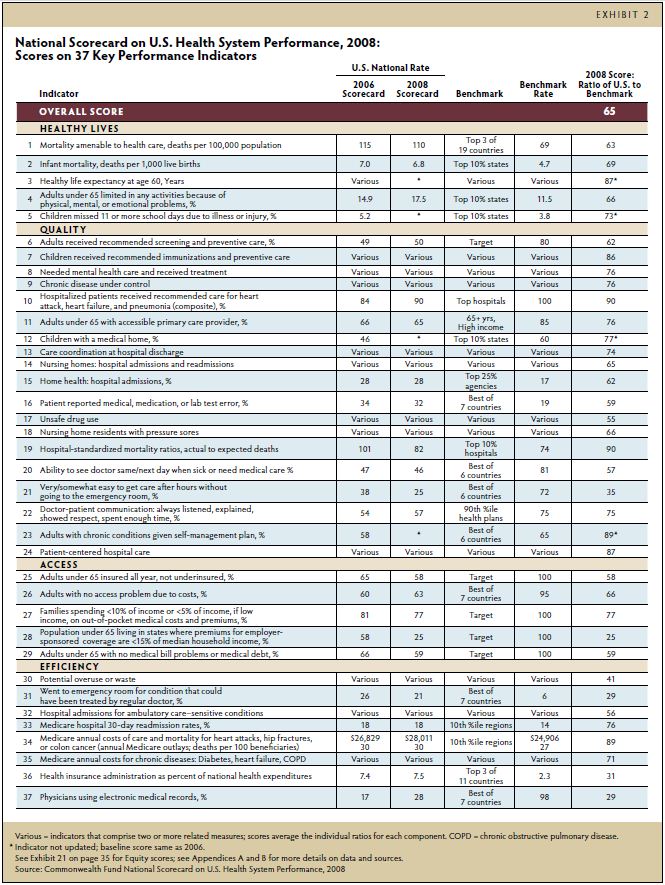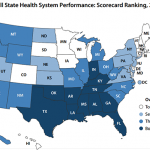National scorecards for the health system – U.S. Case study
One of the most comprehensive means of measuring and monitoring healthcare outcomes, quality, access, efficiency, and equity in the United States was designed in 2006 and updated in 2008, known as the National Scorecard on U.S. Health System Performance.The scorecard contains 37 core Key Performance Indicators grouped in five dimensions of health system performance: healthy lives, quality, access, efficiency, and equity. U.S. average performance is compared with benchmarks drawn from the top 10 percent of U.S. states, regions, health plans, hospitals, or other providers or top-performing countries (The Commonwealth Fund Commission on a High Performance Health System, 2008).
Source: The Commonwealth Fund Commission on a High Performance Health System (2008)
In 2011, The Commonwealth Fund published a new national scorecard dedicated to Child Health System: The State Scorecard on Child Health System Performance, 2011, that examines states’ performance on 20 key indicators of children’s health care access, affordability of care, prevention and treatment, the potential to lead healthy lives, and health system equity.

Source: How et al. (2011)
Both scorecards used for monitoring and managing performance within the health system provide a framework to take stock of where the healthcare stands and what could be gained by reaching and raising benchmark performance levels.
References
- The Commonwealth Fund Commission on a High Performance Health System (2008), Why Not the Best? Results from the National Scorecard on U.S. Health System Performance, 2008
- How et al. (2011), Securing a Healthy Future: The Commonwealth Fund State Scorecard on Child Health System Performance

Tags: Benchmarking, Government performance, Healthcare performance, Performance in USA, Scorecard, The Commonwealth Fund Commission







